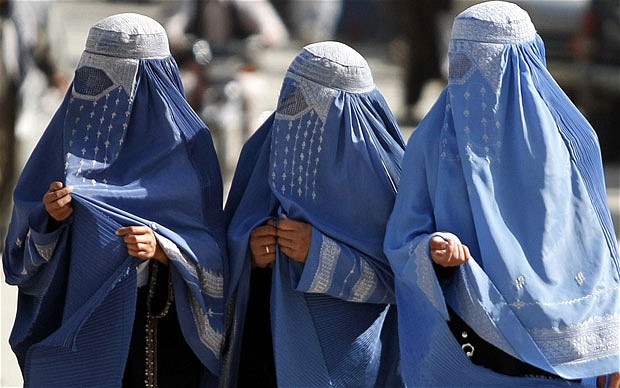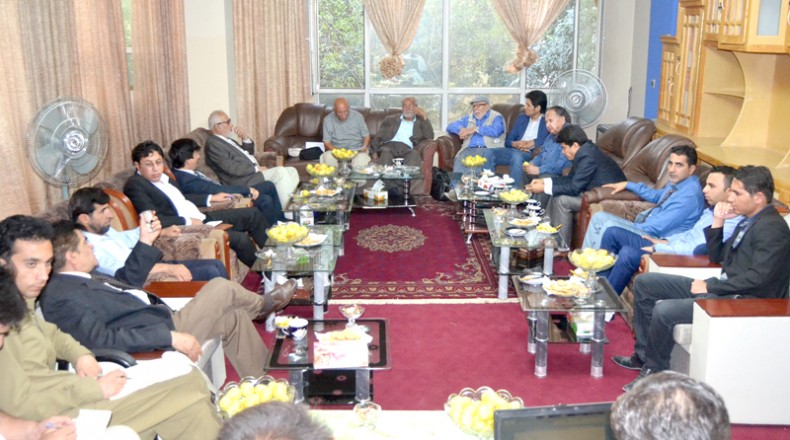“Eighty percent women do not observe birth spacing in Afghanistan,”— Dr. Hamida
By Akhtar M. Nikzad-In Afghanistan, people mostly want to have several children. Some link this mindset to religion and some to traditions. Therefore, women are impelled to respect the rule and inevitably deliver several babies without observing birth space.
The average birth rate per family in Afghanistan is five babies, but the topmost is ten children. This trend has been continued from past up to now, without evaluation of its future ruinous affects in a family and society.
According to a survey of the “Save the Children” about the children and mothers’ situation in the world (investigated over 179 countries) Afghanistan ranked 152. According to this report, Afghanistan is a country where the live condition is not promising for women and children.
As per the survey report of the World Health Organization, still Afghanistan kept the highest record of child and maternal mortality rate in the region due to lack of accessibility to required healthcare services and other factors.
Ministry of Public Health (MoPH) said that Afghanistan ranked 27 in the word and first in the region for high rate of child and maternal mortality.
According to the figures released by the ministry, as many as 1,600 mothers died in every 100,000 in 2014 while giving birth to a baby or as result of pregnancy-related problems.
In addition to complicated pregnancies, inaccessibility to primary healthcare services, insufficient numbers of health workers, early marriages, insecurities, poverty and unemployment are counted as the major factors for child and maternal mortality rate in Afghanistan.
Based on reports, majority of young mothers lost their lives during pregnancies, because they give birth before age of 18. These category girls always have been victim of violence and taboos. They are compelled to marry for money or given as Bad (to resolve a tribal conflict).
Estiqlal Hospital is a place where daily many pregnant women are brought from city or provinces for checkup or delivering babies. Among the pregnant, young women were also seen. Most of them face financial problems.
This reporter interviewed some expectants about their living condition, health and number of their children. Zarghona, 40-year old, has eight children and she is expecting the ninth one. She is feeling weak and seeking medical help.
Waiting for her turn in a crowded ward, she appears troubled and lost. “Since I have gotten pregnant almost a month ago, I have been feeling too much tiredness and anxiety. I don’t even have the energy to force myself to work and feel guilty that I am neglecting my youngest child who is just three years old,” she says worryingly.
Low income is another challenger that annoys Zarghona’s heart, she regrets that often her husband has to borrow money to make ends meet. Lack of financial resources also deprived her children of getting school education.
Replying to a question about how the couple would meet the needs of another baby and whether the couple really wanted an addition to their family at this time, she said: “It’s God who brings every soul in this world and feeds all His creations. But, yes, it’s not a wanted pregnancy as we didn’t have the desire for more children.”
“You know majority of women in the families have not the authority to give birth to few babies so that they will not face financial problem in the future and to have good education and health. In Islamic society, there is a slogan that bring many children to augment the Islamic nation. However, Islam never said to kill your wife to deliver several children,” she said.
When asked whether she discusses with her husband the number of children they should have, she looked at with surprise and replied that it would spark violence in the family.
Shapirai, a 30-year old mother of six children from Ghazni province, said that her husband wants many sons in a bid to have powerful family in his kindred.
“People in many provinces want to have more sons so the rivals will not dare to hurt them. Those who have a few sons, think that they are weaker than the families having several sons. Therefore, they endeavor to have the same number of sons and term it a big magnificence in the society. We the women are victims of such unsound thought. Our health is not good, our children are deprived of education and finally our economy is weak as well,” she said while reflecting a grim reality.
Regarding her health condition, she said that she has high blood pressure and heavy weight that is dangerous for her, because during her first pregnancy she lost one of her twin babies. The one who survived is still weak. “After my second delivery, I asked my husband whether I can use any contraceptive methods, but he strongly rejected the idea, saying that it’s against our tradition and values,” she recounts.
Poverty and pregnancy
The brief stories of these women offer a glimpse into the lives of thousands of Afghan mothers, a majority of them are either completely illiterate or semi-literate and belong to a class that hardly earn enough to survive.
Repeated pregnancies without adequate space between births, according to experts, not only endanger life of mother and baby, but also deprive these women of enjoying motherhood in its true sense. Women burdened by large families and battling various illnesses in their productive years fail to realize and harness their potential and are unable to raise their children in a healthy environment.
Whereas, Afghanistan has the highest maternal and child mortality rates in the world also faces the challenge of population explosion. So far there is no exact figure about its population on the hand. Family analysts believe that lack of family planning methods will result that Afghanistan would have uncontrolled population in the next 50 years.
Challenges in front of health sector
Deputy Minister of Public Health, Najia Tariq, said that currently 4,600 midwives are working in the country and increase in number of the midwives would be an effective effort to reduce the maternal mortality rate.
She said that the midwives provide prenatal and after birth healthcare services to women in different parts of the country, and implement the family planning.
“Maternal mortality in Afghanistan has been decreased up to five percent in the past 15 years, but still we have long way to overcome this problem. Still, one in every five women in the country dies from a pregnancy-related cause during her life time,” she said.
Insecurity, low level of awareness among women about healthcare service during pregnancy, lack of professional health workers in the remote districts, shortage of transportation facilities and inappropriate traditions are the major challenges that she pointed out.
Space between births are not observed
Family planning is the first pillar of safe motherhood. It’s the responsibility of doctors to educate and encourage women, especially those who are admitted for a delivery, to use contraceptives.
Dr. Hamida Omar, pregnancy and maternity expert in Estiqlal Hospital, said that women who live in the provinces could not observe the family planning methods due to pressure from husband side.
She said that rural women face financial problems because they are dependent on their husbands and have not the authority to take the decision about the number of children. “Only their husbands can determine the children’s number. Therefore, space between births is not observed. When pregnant women are referred to me, I ask them that how many children they have. They simply answer that it will be ninth or tenth. I have seen young women who have married few years ago but have four children. They said that their husband or mother-in-law wants more children,” she resented.
Generally, 80 percent of women do not observe space between births. Many do not have facilities or don’t know about contraceptive methods. The remaining 20 percent who observe the space are living in the cities or have information in this regard.
According to medical science, women should observe three to five year spaces between each birth. Multiple pregnancy affect health of the mother and newborn baby, particularly those who were married before the age of 18, Dr. Hamida said.
Speaking about the solution, she said that media and the government could play a major role in dispelling wrong concepts. “No religion says that a woman shall bear a child if she is mentally and physically unhealthy,” Hamida stressed while adding that the religious scholars should also promote birth spacing.
 Afghanistan Times
Afghanistan Times




